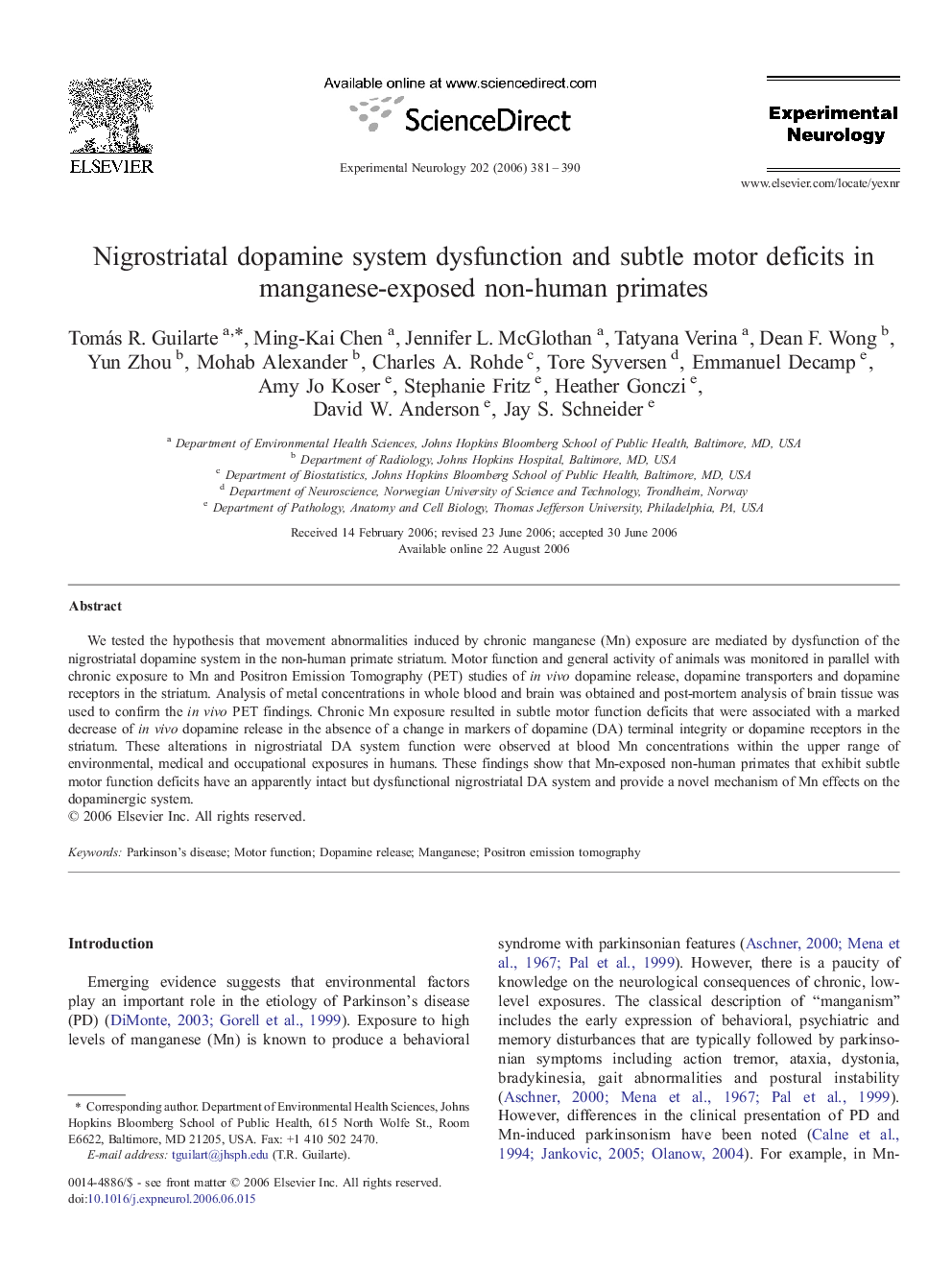| Article ID | Journal | Published Year | Pages | File Type |
|---|---|---|---|---|
| 3057263 | Experimental Neurology | 2006 | 10 Pages |
We tested the hypothesis that movement abnormalities induced by chronic manganese (Mn) exposure are mediated by dysfunction of the nigrostriatal dopamine system in the non-human primate striatum. Motor function and general activity of animals was monitored in parallel with chronic exposure to Mn and Positron Emission Tomography (PET) studies of in vivo dopamine release, dopamine transporters and dopamine receptors in the striatum. Analysis of metal concentrations in whole blood and brain was obtained and post-mortem analysis of brain tissue was used to confirm the in vivo PET findings. Chronic Mn exposure resulted in subtle motor function deficits that were associated with a marked decrease of in vivo dopamine release in the absence of a change in markers of dopamine (DA) terminal integrity or dopamine receptors in the striatum. These alterations in nigrostriatal DA system function were observed at blood Mn concentrations within the upper range of environmental, medical and occupational exposures in humans. These findings show that Mn-exposed non-human primates that exhibit subtle motor function deficits have an apparently intact but dysfunctional nigrostriatal DA system and provide a novel mechanism of Mn effects on the dopaminergic system.
